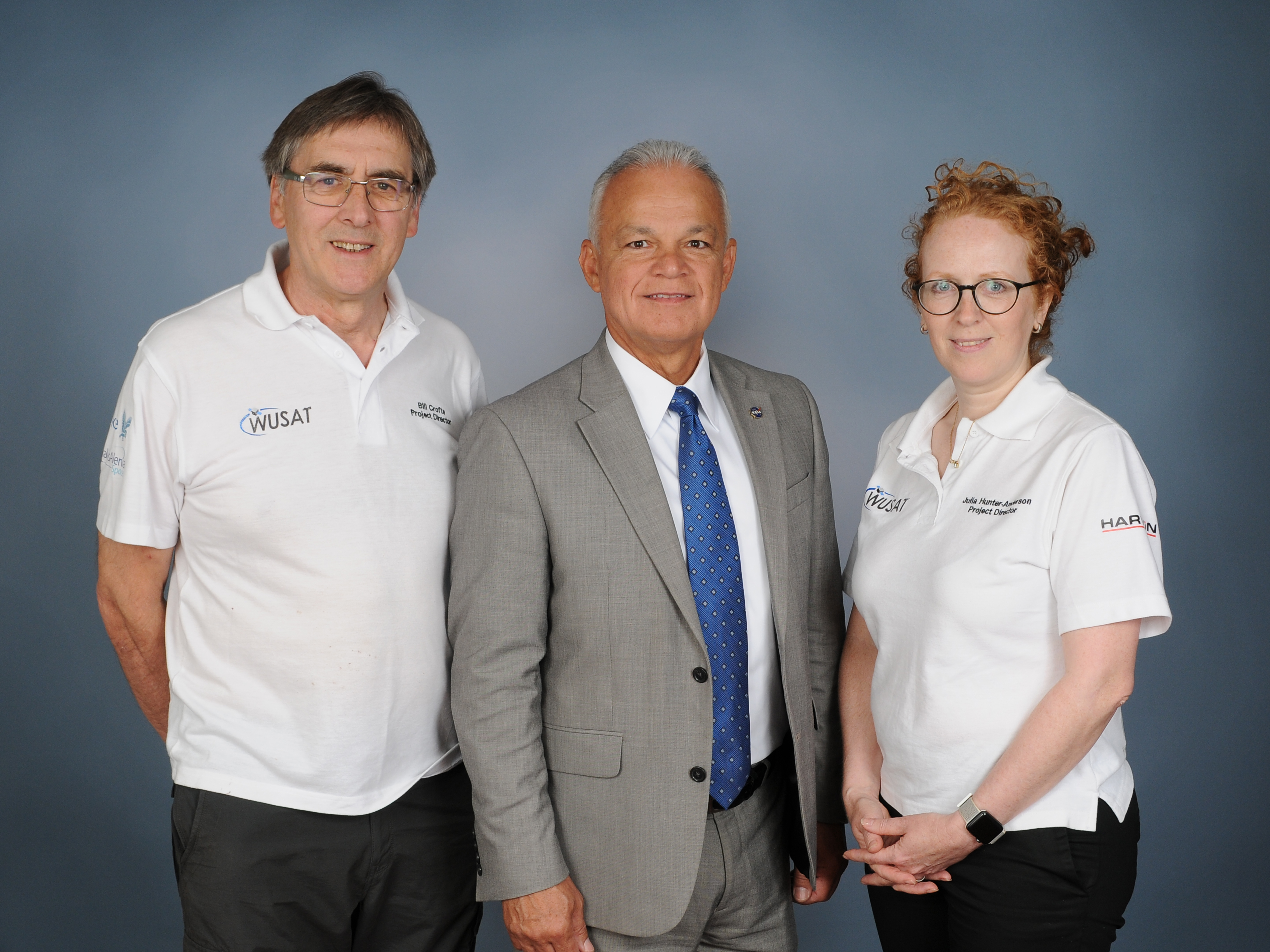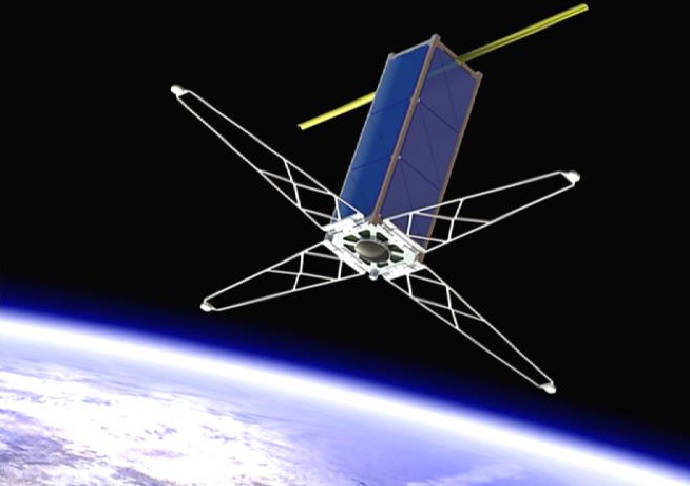NASA chief praises Warwick’s satellite programme
NASA’s principal advisor on technology and programmes has praised the University of Warwick’s satellite project WUSAT, calling it “remarkable work”.
Dr Douglas Terrier, the Acting Chief Technologist at NASA, was awarded an Honorary Doctorate of Science at the University’s Summer Graduation ceremonies on 20 July 2018.
While he was at Warwick, he met the co-directors of WUSAT, a multi-disciplinary, 4th Year MEng project based in the School of Engineering to design and build satellites to be launched into space.
Dr Terrier said he was “terribly impressed” by the multi-disciplinary nature of the project, and the fact that students are working to create real flight-quality products to send into space.
He said it is: “a marvellous approach to teaching, where not only will students understand the disciplines, but they will first have the opportunity to do some hands-on work.”
Dr Terrier commented on the “remarkable work” of the WUSAT project, that “it’s the kind of project I would point to as an example of exactly how we should be training students”.
Reflecting on the importance of studying Engineering, Dr Terrier said that it gives you “a template from which you can examine individual actions” – and can be used in everything from space exploration to making life plans, organising your finances or booking a train.
He described the “philosophy of systems engineering”, which applies in all areas of life: “you start with a basic requirement of what you’re trying to accomplish, and try to work backwards to decompose that down into what needs to happen to accomplish that, what are the building blocks that I need to develop to enable those accomplishments.”
Born in “a fairly austere environment” in rural Jamaica, Dr Terrier had a teacher who introduced him to the NASA Apollo missions, reading out reports of the telemetry from the spacecraft to Houston out of the daily newspaper.
“That transported us,” he said, “from that very limited world into our imaginations, a boundless reality – which has brought me to where I am today.”
His advice to new graduates, and indeed to us all, is “find your Apollo […] that inspiration or big goal that will drive your life, and pursue it relentlessly.”
Focusing on NASA’s most recent projects and initiatives – such as the aim to take humans to Mars and finding “very tangible hints of life” in the steam and soil of faraway icy planets - Dr Terrier believes that we are living through “the most exciting time in space exploration”.
He continued: “for sixty years now NASA has been trying to answer these basic human questions of ‘how did the universe originate’, ‘how did we get here’ and ‘are we alone?’ The exciting thing is that we are at a point – literally for the first time in human history – where we may have the knowledge and technology to begin to answer these questions.”
Notes to editors:
Image 1: Dr Douglas Terrier with WUSAT co-directors Dr Bill Crofts and Prof Julia Hunter-Anderson - credit University of Warwick. Click image for high res.
Image 2: WUSAT 3 satellite - credit University of Warwick. Click image for high res.
More information on WUSAT can be found on the website, or on this feature article.
Previous WUSAT story: ‘Student satellite set for space to help global conservation’
Dr Douglas Terrier is NASA’s acting chief technologist. He is the principal advisor and advocate on NASA technology policy and programs, helping plot the strategic direction of the agency's space technology program.
Prior to this role he worked at NASA’s Johnson Space Center, Houston, as the centre’s chief technologist. He also served as the deputy director of NASA Johnson’s Strategic Opportunity and Partnership Development (SOPD) Office, and as NASA’s Associate Director of Engineering where he led teams responsible for design and development of spacecraft for NASA’s human space exploration program. He also managed the multi-centre Crew Exploration Vehicle Aero-science Project developing the critical aerodynamic and aero-thermal environment design database for the Orion spacecraft.
Prior to joining JSC, he served in the Enterprise Readiness Division in the Office of Program Analysis and Evaluation at NASA HQ. He first joined NASA in 2003 at the Langley Research Center in the Office of Business Development.
Dr Terrier worked in the commercial aerospace sector for a total of 23 years with Lockheed Martin, General Dynamics and General Electric Aircraft Engines. He was responsible for International Business Development for Lockheed Martin in the Asia/Pacific region.
He earned a Ph.D. in aerospace engineering and a MS in Mechanical Engineering from the University of Texas. He also completed the Carnegie Mellon Graduate School of Industrial Management program with the Lockheed Martin Institute for Leadership Excellence. Terrier holds patents for his work in aerospace propulsion and has published numerous technical papers. He has earned the Lockheed Martin “Outstanding Technical Achievement” award on four occasions, several NASA “Superior Technical Accomplishment” awards, and the NASA Leadership medal.
26 July 2018
Further information contact:
Luke Walton, International Press Manager
+44 (0) 7824 540 863
+44 (0) 2476 150 868
L dot Walton dot 1 at warwick dot ac dot uk


